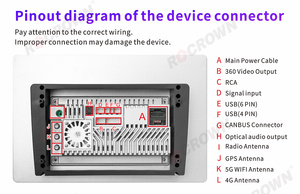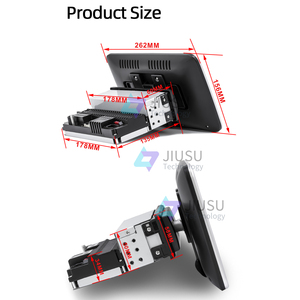(72950 products available)

























































































































































































































































A car audio system is one of the most important accessories in a car. It enables the driver to listen to music and other audio content while on the move. The sound system has become a must-have for car owners. Audio systems for cars come in different types. Here are some of them:
Head Unit
The head unit is the control center of the car audio system. It allows the user to control audio playback, such as adjusting the volume, changing tracks, and selecting sources. Head units can have CD players, USB ports, Bluetooth connectivity, and touchscreen displays. They are further divided into two types: Traditional and Digital.
Speaker
Speakers are an important part of a car audio system. They are responsible for converting electrical signals into sound. Speakers come in different sizes and types, such as coaxial and component speakers. Coaxial speakers combine multiple speaker elements into one unit. This allows them to take up less space and be affordable. Component speakers separate the different elements into individual units. This enables them to produce sound with more clarity.
Subwoofer
A subwoofer reproduces low-frequency sounds, such as bass and rumble. This makes the audio experience richer and more immersive. Subwoofers come in various sizes and are usually placed in a trunk or customized enclosure in the car. They can be classified into two main types: Passive and Active subwoofers. Passive subwoofers require external amplification, while active subwoofers have built-in amplification.
Amplifier
The role of an amplifier in a car audio system is to boost audio signals. It makes the sound loud and ensures clarity, even at high volumes. Amplifiers come in different channels and power ratings. They can be monoblock, 2-channel, 4-channel, or multi-channel.
Signal Processor
A signal processor improves audio quality by manipulating audio signals. It ensures the sound produced is balanced and clear. Signal processors include equalizers, crossovers, and digital signal processors (DSPs).
Installation Accessories
These are not part of the car audio system but are important for installation. They include mounting brackets, wiring harnesses, and adapters. Some audio systems come with specific installation accessories.
Power:
Power handling refers to the amount of power a speaker or amplifier can manage without being damaged. When shopping for speakers or amplifiers, buyers should consider their power needs. They should purchase speakers that can handle the output from their amplifier.
Size:
Car audio speakers are available in various sizes. Sizes range from 3 inches to 15 inches. Speaker size affects sound quality and placement options. Larger speakers provide better bass response. When choosing a speaker, buyers should consider the available space in their car.
Impedance:
Car audio speakers have different impedance ratings measured in ohms. Common values are 2 ohms, 4 ohms, and 6 ohms. Buyers should choose speakers with an impedance rating that matches their amplifier's output. This ensures compatibility and optimal performance.
Frequency Response:
Frequency response measures the range of frequencies a speaker can reproduce. A speaker with a broader frequency response can produce higher and lower frequencies. This results in a more balanced sound. Speakers with a frequency response of 20Hz to 20kHz are suitable for most car audio systems.
Material:
Speakers are made from various materials. Each material affects sound quality and durability. For example, polypropylene is a common cone material used in speakers because of its affordability and good performance. Tweeters are often made from silk, aluminum, or graphite.
Installation:
Some car audio systems are easy to install. DIY installation saves money. Systems that require professional installation may come with additional costs. Before buying a car audio system, buyers should consider installation requirements and compatibility with their car model.
Maintaining a car audio system can greatly increase its longevity and performance. Below are some of the maintenance tips for a car audio system:
Clean the speakers:
Over time, speakers accumulate dust and debris. These particles can affect sound quality. Clean the speakers regularly using a soft brush or microfiber cloth. This removes dust without damaging the speaker's surface.
Check the connections:
Loose or corroded connections can cause audio problems. Periodically, buyers should inspect all wiring connections in their audio system. Ensure that all connections are secure and free from corrosion.
Update firmware:
Some modern car audio systems with Bluetooth capabilities have upgradable firmware. Visit the manufacturer's website to check for available updates. Follow the instructions to ensure that the audio system performs optimally and remains compatible with new devices.
Avoid overdriving the system:
Overdriving the audio system at maximum volume for extended periods can cause damage. The distortion strains the speakers and amplifiers. Use moderate volume levels, especially when playing bass-heavy tracks.
Business buyers should consider several factors when selecting a car audio system for resale.
Many modern cars come with stereo systems already installed. This means that replacing or upgrading the system is a straightforward process that can be done at home with basic tools. Here’s how to do it:
Q1: Can the factory's car audio system be replaced?
A1: The factory audio system can be replaced. Users can choose a new audio system that meets their needs and install it in the car.
Q2: What is a car audio system?
A2: A car audio system is a device that allows sound to be played inside a car. It includes components such as speakers, amplifiers, and a radio.
Q3: Is it possible to upgrade a car audio system?
A3: Yes, it is possible to upgrade a car audio system. Various options are available for improving sound quality and enhancing features.